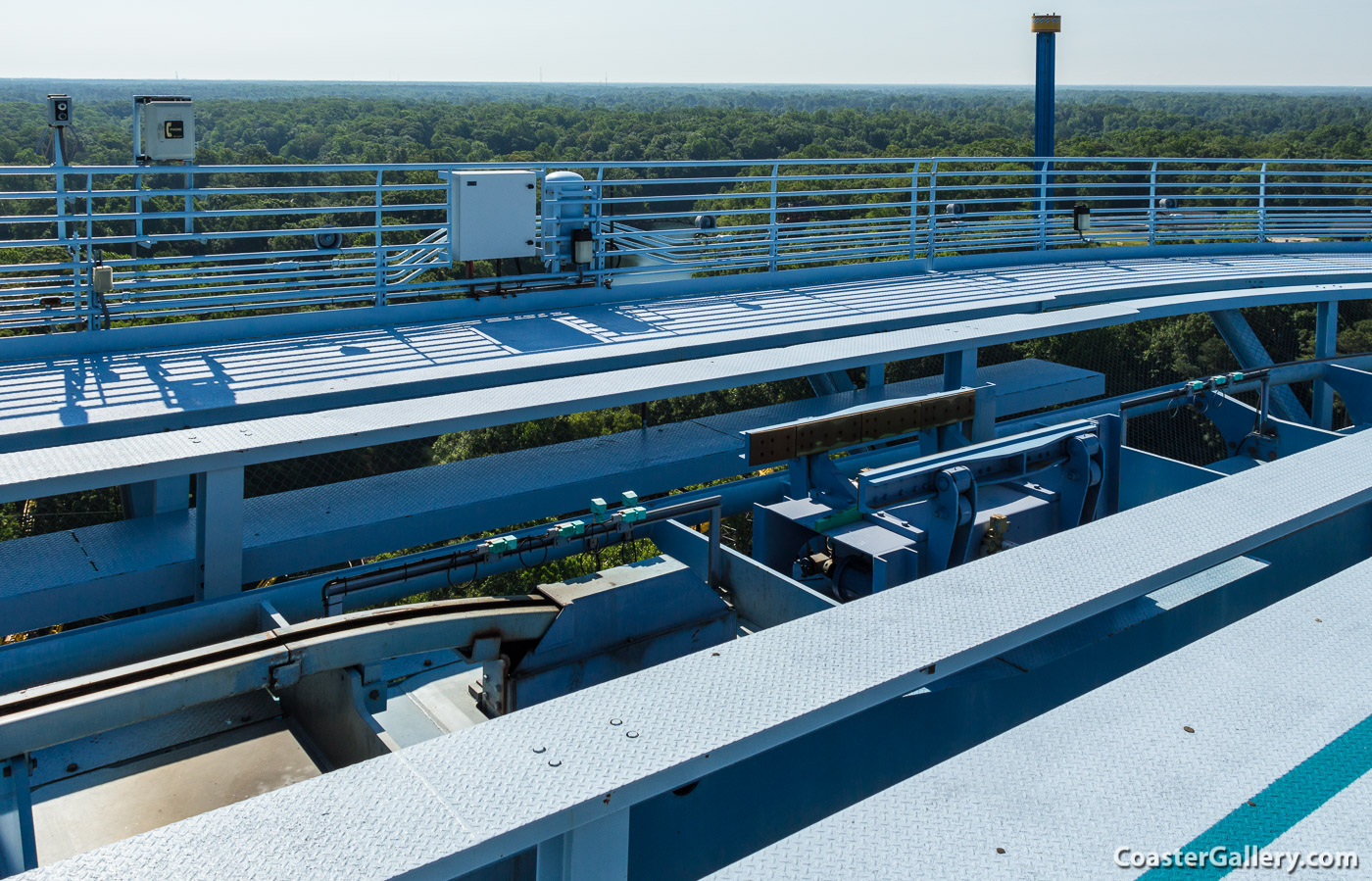
Griffon
There are several ways that a train's position can be registered on a roller coaster. In the past, physical switches were moved by a passing train. Other coasters used electronic eyes that measured the motion of a train when the cars physically blocked beams of light. Modern coasters use proximity sensors, often called prox switches, because they are more reliable than physical switches and light sensors. This picture shows eight proximity sensors, the small green boxes mounted around this area. You can even see the electrical cables that send the sensors' signals to the ride's computers. A coaster like this can have over 100 proximity sensors. They are used to sense the position of items such as the train, the passenger gates in the loading platform, the restraints, and even the gates in the fence surrounding the ride. (Remember the lock-out picture? Two sensors were on that gate!) Most of the time, the prox sensors are mounted in pairs or trios. This redundancy allows the ride to keep operating in the event of a failed sensor.
All of these proximity sensors have permanent magnets in them. As the train passes close to the sensor, the magnet is drawn toward the metal in the train. The magnet's movement triggers a switch that sends an electrical signal. Because the moving magnet and switch are sealed inside the green box, the mechanism is protected from the elements and doesn't allow dirt, dust, grease, rain, or snow to affect the sensor's operation.

©2018 by Joel A. Rogers.